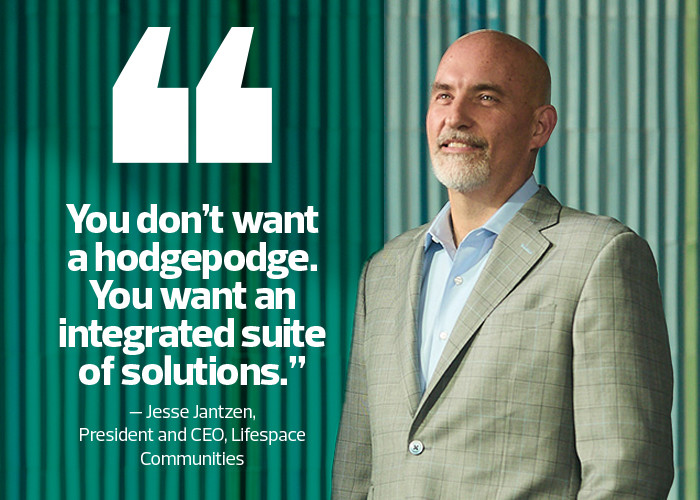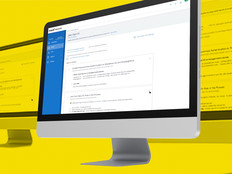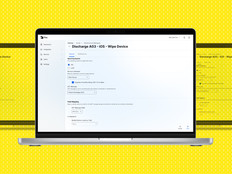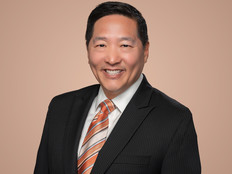Technology to Attract and Retain Senior Care Staff
Lifespace is in the process of revamping its career website to better attract new employees, and the organization relies heavily on Workday, the enterprise human capital management system, for its HR operations.
“We use it for the entire lifecycle of the team member: recruiting, time tracking, payroll and PTO, benefits and learning management,” Roach says. “It’s a holistic tool that can be accessed via mobile. It gives us better analytics around our payroll and labor expenses, and it gives our team members an incredible amount of visibility.”
“It isn’t about cutting staff or reducing their time, or having a negative impact on team members,” adds Lifespace President and CEO Jesse Jantzen. “What Workday does is help us to more efficiently manage that scarce resource.”
Roach and Jantzen also point to technologies that aren’t directly related to HR but help improve employee productivity and satisfaction — all while also facilitating better outcomes for residents. One of these is VirtuSense, which uses sensors and artificial intelligence (AI) to help predict falls.
RELATED: Enhance employee experiences with solutions that enable them to work from anywhere.
“It frees up time because you don’t have to do as many bed checks,” Roach says. “That allows team members to focus on other important activities, and it also helps our residents get a better night’s sleep since they have fewer interruptions.”
Lifespace is also piloting CarePredict, a digital health platform that leverages wearable devices and AI.
Just as important as the technologies themselves is how they are deployed and managed, Roach says. “You need to understand how technology will be used by the by team members in the specific context of their work,” he adds.
“A lot of organizations will chase a bright, shiny object, and then you end up with this random environment,” Jantzen says. “You might have different apps to communicate with residents in different communities, or three different scheduling options. You don’t want a hodgepodge. You want an integrated suite of solutions.”











